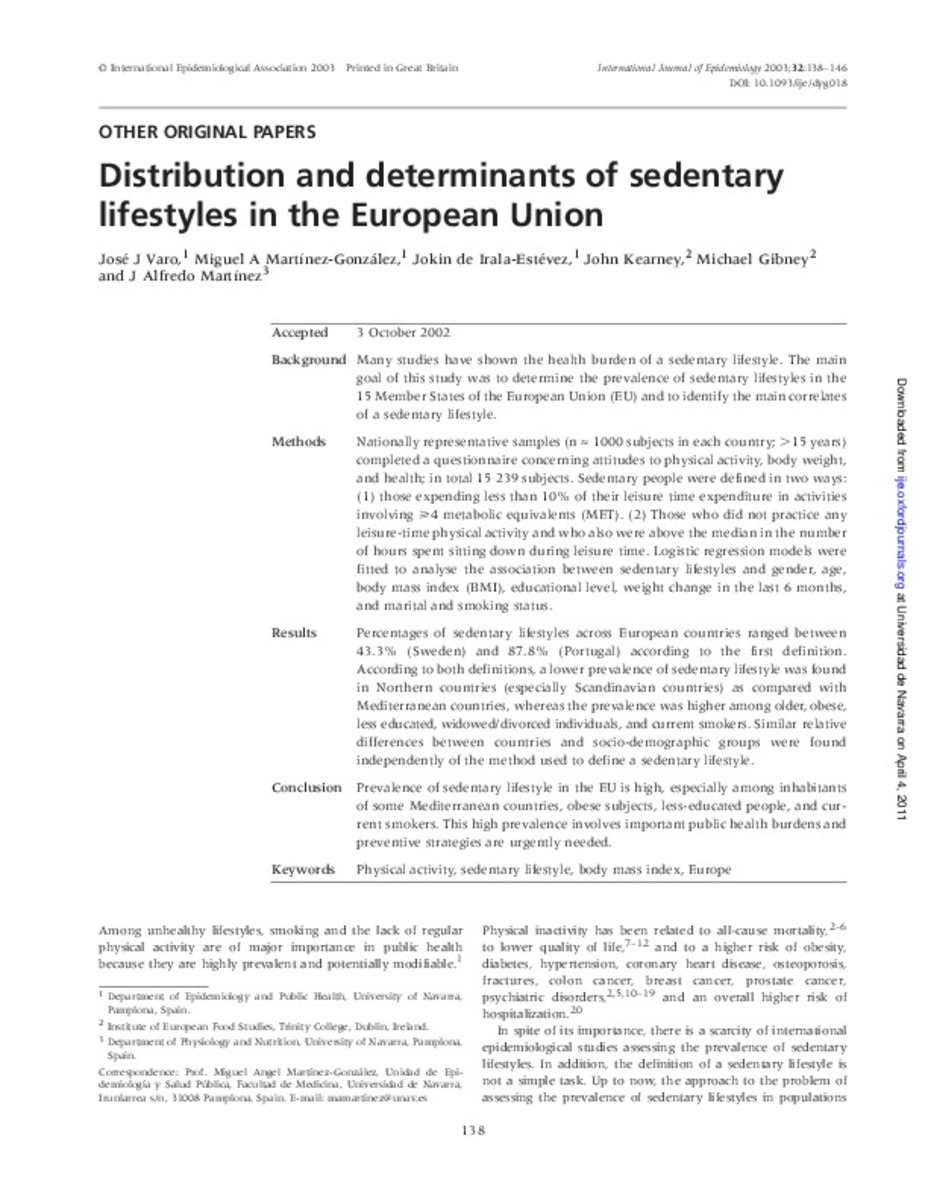Distribution and determinants of sedentary lifestyles in the European Union
Palabras clave :
Physical activity
Sedentary lifestyle
Body mass index
Fecha de publicación :
2003
Editorial :
Oxford University Press
Cita:
Varo JJ, Martinez-Gonzalez MA, De Irala-Estevez J, Kearney J, Gibney M, Martinez JA. Distribution and determinants of sedentary lifestyles in the European Union. Int J Epidemiol 2003 Feb;32(1):138-146.
Aparece en las colecciones:
Estadísticas e impacto
0 citas en

0 citas en

Los ítems de Dadun están protegidos por copyright, con todos los derechos reservados, a menos que se indique lo contrario.








